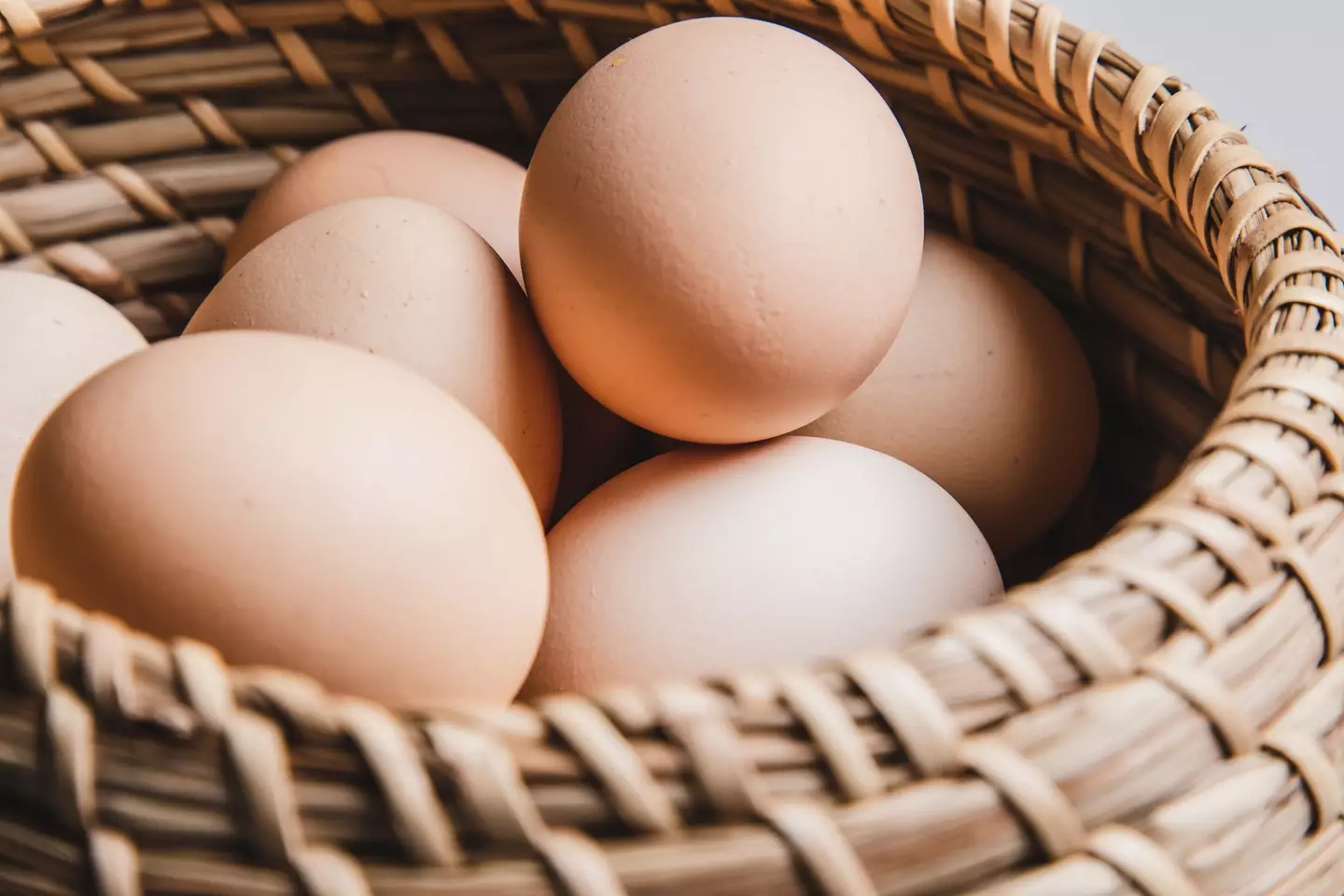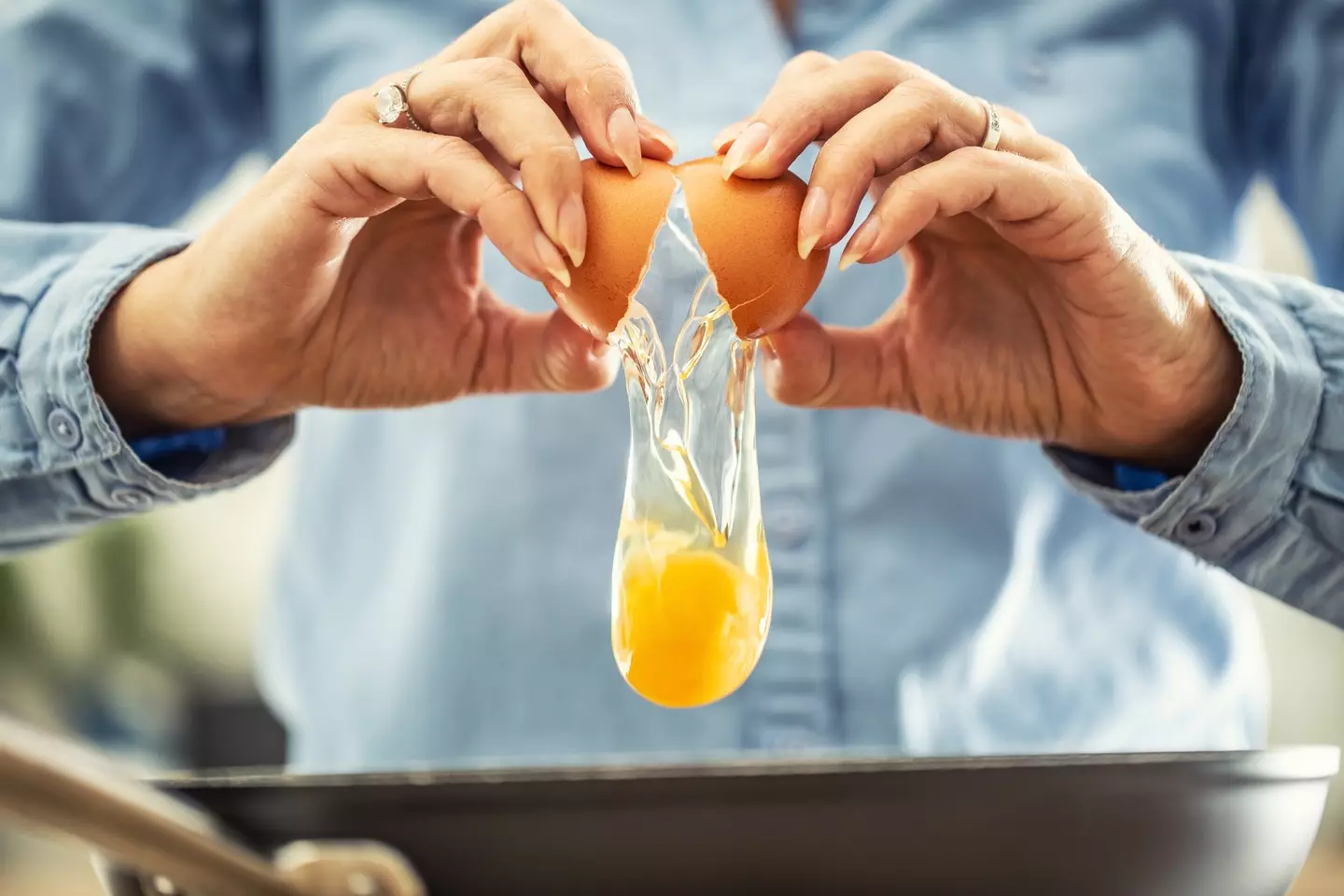
Walk into any supermarket and you’ll notice eggs come in all sorts of shapes, sizes and colours, and you've most likely never known why.
The eggs you'll see are usually brown or white, but sometimes even blue or green, and it can often make us wonder what the difference between them all is.
"In many countries, such as the USA, white eggs are the predominant egg and up until the early 1970s, white eggs were popular in the UK," British Lion Eggs explains on its website.
"However, during the late 1970s the number of white eggs began to diminish as consumers expressed a preference for brown eggs. Until fairly recently the British industry has produced almost 100 per cent brown shelled eggs, but white eggs are starting to become more common again."
Advert
But why did our preferences change? What's the difference?

Why are eggs different colours?
It turns out there is a subtle difference between white and brown eggs, but this has nothing to do with taste.
Advert
"The answer is simple — the colour of the egg shell depends on the breed of the hen," British Lion Eggs continues.
"Brown hens generally lay brown eggs while white hens lay white eggs, however there are specialist breeds that can lay other colours, such as blue."
Pigments produced by hens 'determine the shell colour', with the core pigment in brown egg shells, known as protoporphyrin, made from heme - the compound that gives blood its red colour.
The principal pigment found in blue eggshells, meanwhile, is called biliverdin, which is also made from heme and is the same pigment that can give bruises a blue-green colour.
Advert
"Egg shells may also vary in colour / shade among the same breed of hens due to genetic dominance among individual birds," British Lion Eggs adds.
Shell colour can also vary within a single breed of hens, and can be dependent on genetics, so some eggs appear darker or lighter depending on the individual hen.
Is there any difference in taste?
Knowing about the colour is all well and good, but the true question is whether they taste different.
Advert
In terms of nutrition, protein and taste, there’s no difference at all between brown and white eggs.
A medium egg, regardless of shell colour, is said to provide around 6.4 grams of protein, as well as essential vitamins, minerals and high quality protein all in fewer than 80 calories.

Despite this, consumer preferences have shifted over time, with some people claiming brown or white eggs taste better.
Advert
However, science says otherwise, with evidence suggesting taste is influenced by a hen’s diet and how fresh the egg is, not by the colour of its shell.
Another point to consider is food safety, and all British Lion eggs (whether white, brown, or even blue) carry the red Lion mark, which guarantees world-leading food safety standards.
They are also approved by the Food Standards Agency (FSA) to be eaten runny, even by vulnerable groups such as pregnant women, babies, and the elderly can enjoy them.
When it comes to choosing eggs, colour is only skin deep and we should remember that when shopping for them. So the next time you’re faced with a choice, remember that the shell might look different, but what’s inside is always the same.
Topics: Cooking
